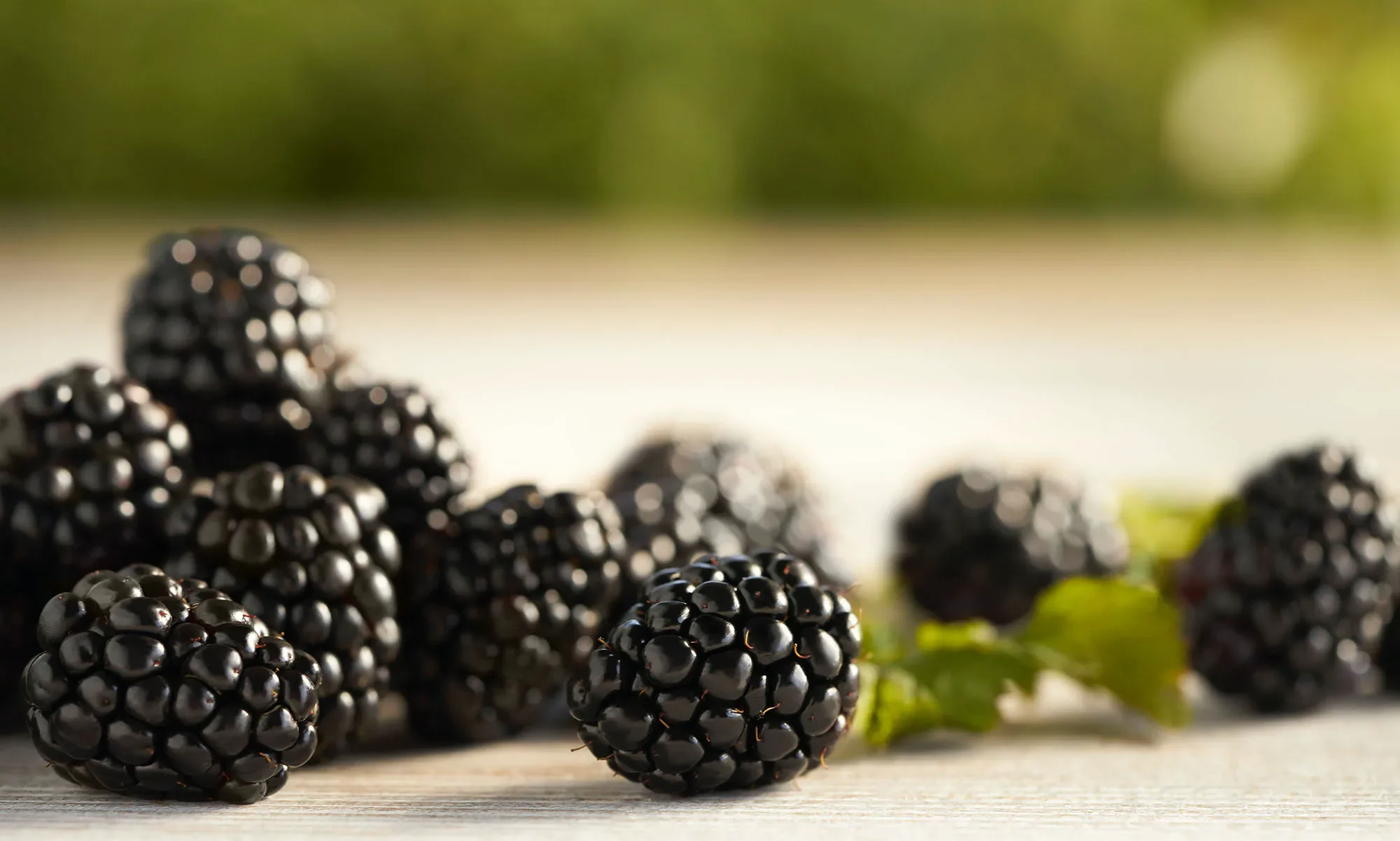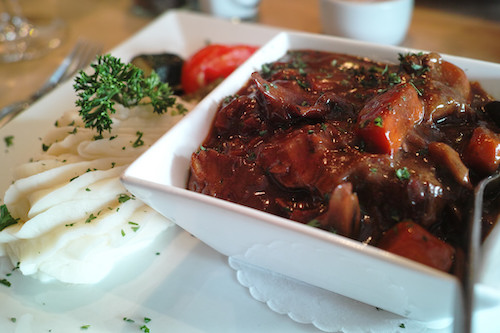“However fine, stew is a homey, intimate exchange, a paean to the way living things improve when their boundaries relax, when they incorporate some of the character and flavor of others. Soulful, a word inextricably linked with a good sturdy stew, is the payoff to the cook who plans a little and has the patience to abide…” Molly O’Neill, NYTimes Magazine, 1994
You can read the entire glorious paean to stews—A Simmer of Hope—here.
Bœuf Bourguignon
Approximate Yield: Eight 2-cup servings // 483 calories, 14 net carbs
4 tablespoons extra virgin olive oil
6 ounces bacon, roughly chopped (about 6 slices)
3 pounds beef brisket or chuck roast, cut into 1″ cubes (dry-aged, grass-fed, if possible*)
8 ounces pearl onions, trimmed and peeled
4 tablespoons tomato paste
1 cup good cabernet sauvignon, zinfandel, or pinot noir
8 ribs celery, sliced (about 10 oz.)
6 ounces carrot, roll-cut or thickly-sliced (more carrots = more carbs)
8 cups grass-fed beef broth
2 large bay leaves
2 branches of fresh thyme (or 1 teaspoon dried thyme)
2 teaspoons smoked paprika
6–10 large cloves garlic, thickly-sliced
2 teaspoons salt
2 teaspoon freshly-ground pepper
4 tablespoons grass-fed butter (I use Kerrygold)
16 ounces whole mushrooms, quartered
salt and freshly-ground pepper to taste
Bring the beef to room temperature before cooking.
Pat beef dry with paper towels. Add one-third of the meat to the pot. Let the meat cook for a few minutes until the bottom has a dark crust, then repeat that process for the other sides of the meat. It takes time, but you’ll be rewarded with an extra flavorful stew. Remove the browned meat to a large bowl. Repeat with the remaining meat in 2 more batches; set aside.
Add the onions to the pot and sauté until just softened, about 5 minutes. Add the tomato paste and garlic and sauté until aromatic, about 1 minute.
Pre-heat oven to 300 degrees.
Pour in the wine, scraping up any browned bits from the bottom of the pot. Return the meat and any accumulated juices to the pot. Add the carrots, celery, cooked bacon, beef broth, bay leaf, thyme, smoked paprika, garlic, and the measured salt and pepper.
Increase the heat to high, stirring, and bring to a boil. Immediately place the dutch oven—covered—in the oven, and braise for two hours for regular beef. At the end of the two hours of braising, check the meat for tenderness. If you are using grass-fed beef, it will probably still be a bit tough—cook for another hour. Keep taste-testing until the beef has cooked enough to be tender. This can be as long as 4 hours if using grass-fed beef, depending on the animal’s age and the lushness of its pasture.
About a half hour before the beef is tender, warm butter over medium heat in a separate pan. Add the mushrooms and sauté until aromatic and just tender, about 4 minutes. When there are 5 minutes of cooking time for the beef left, add the sautéd mushrooms to the pot.
Once the meat is finished braising, remove all of the solid ingredients into a large bowl, using a slotted spoon. Increase the stovetop heat to medium-high and reduce the sauce to about 3 cups. Once the sauce is reduced, remove it from the heat and gently add the meat and veggies back to the pot.
Season to taste and serve with mashed potatoes, mashed cauliflower, Healthy Noodles, or egg noodles.
***
*More about grass-fed beef—NOTE: Allow up to five hours for braising grass-fed beef. Without added grain feed, the meat from grass fed animals has a completely different, and much healthier, nutritional profile than grain fed beef. They are also healthier because they are never given antibiotics, added hormones other growth promoting substances. The land they graze is also certified organic, so the animals are never exposed to GMOs (genetically modified organisms), herbicides, fungicides, pesticides or chemical fertilizers.

